Quality Assurance Plan: Definition & Outline
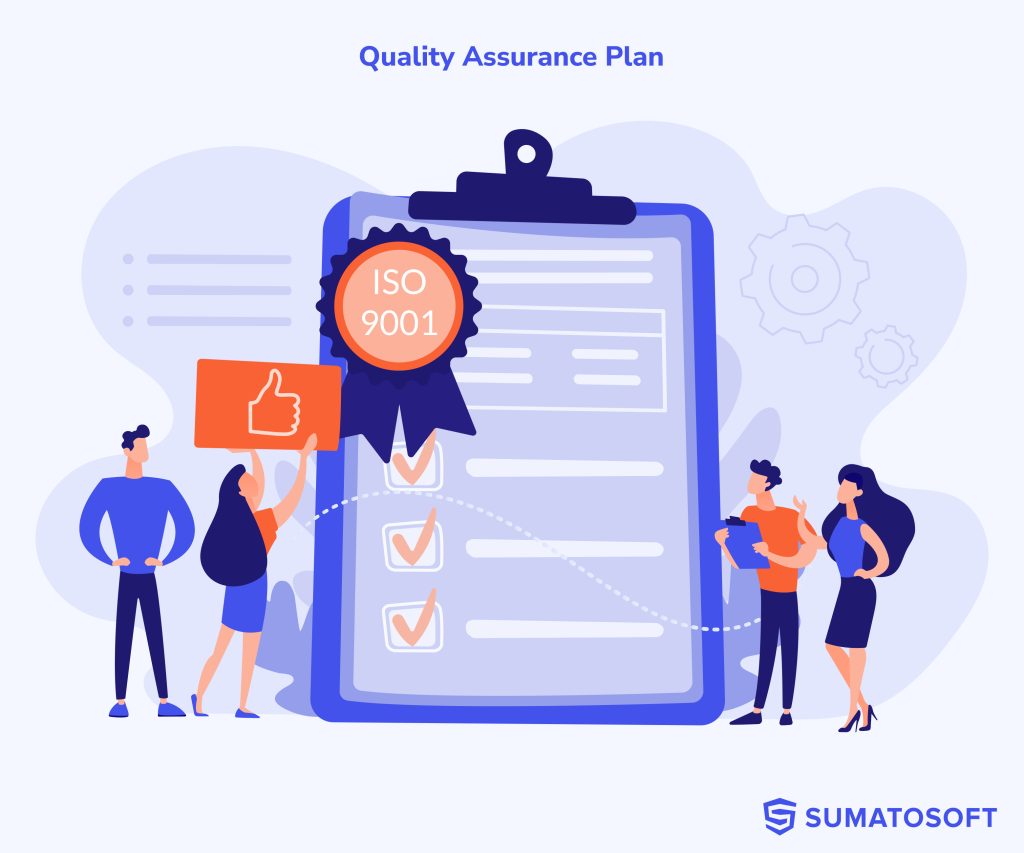
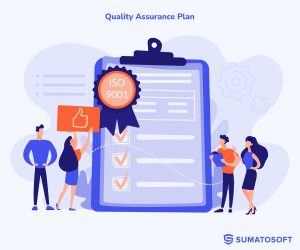
Poor quality products may result in huge financial losses or even total product failure on the market. According to the research of Consortium IT Software Quality, the estimated total cost of poor-quality software that was canceled, failed, or found no widespread use was about $2.84 trillion in 2018 in the USA only. Addressing the software quality issue increases the chances that the money you invest in the software will not be lost.
Besides, the satisfaction of your customers depends on the product quality and, in turn, your brand’s reputation as well. We know that the backbone of quality products is testing. However, not every testing process requires the preparation of a Quality Assurance Plan.
Let’s try to figure out how to get the maximum value out of quality assurance planning and what it’s all about.
It Begins With a Quality Management Plan
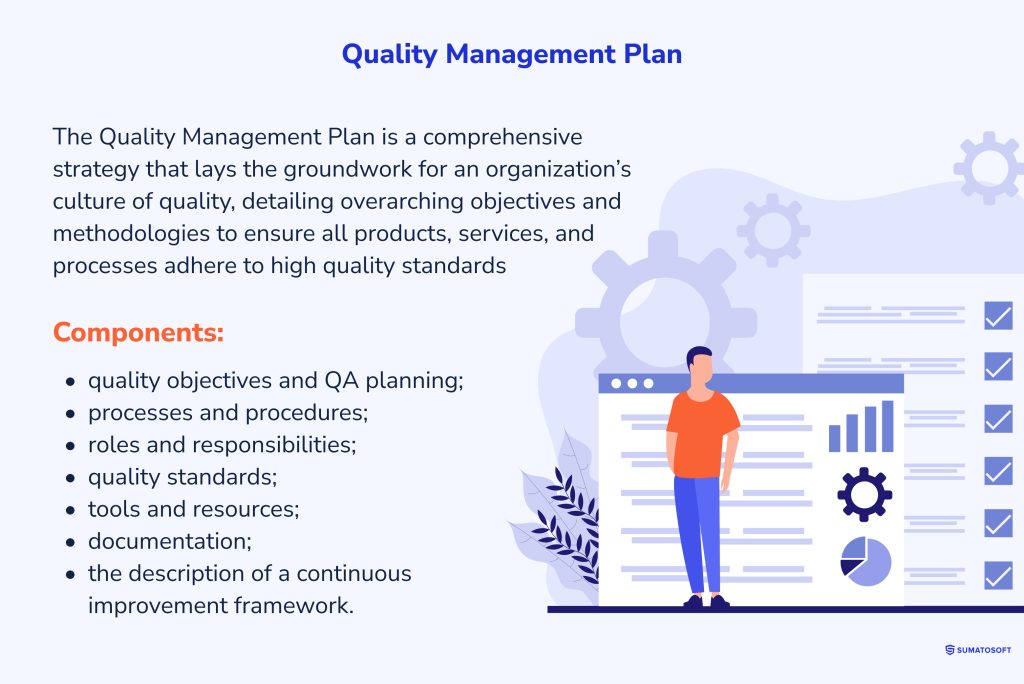
A Quality Management Plan (QMP) goes before the Quality Assurance Plan. It is the cornerstone of an organization’s quality efforts, outlining a structured framework for ensuring products, services, or processes meet predefined quality standards and satisfy customer expectations.
Unlike its more specific counterpart, the Quality Assurance Plan, the Quality Management Plan covers a broader scope, encompassing all activities and responsibilities related to quality across the organization regarding the quality of the final products and quality assurance planning.
Foundation and Purpose
The Quality Management Plan is foundational to establishing a culture of quality within an organization. It sets out the overarching strategy and objectives for quality, detailing how these goals will be achieved. This quality assurance planning is not just about meeting regulatory requirements or standards; it’s about embedding quality into every aspect of the organizational workflow, from the initial stages of project planning through to delivery and post-delivery support.
Quality management plan components:
- quality objectives and QA planning;
- processes and procedures;
- roles and responsibilities;
- quality standards;
- tools and resources;
- documentation;
- the description of a continuous improvement framework.
In general, the Quality Management Plan provides a comprehensive framework that covers all aspects of quality within the project or organization. It encompasses quality assurance, quality control, and quality improvement processes, integrating them into the software development lifecycle (SDLC).
What Is a Quality Assurance Plan?
A Quality Assurance Plan or QAP is a document that is created and used to ensure that the finished product or service meets the criteria outlined beforehand and thus maintains high quality. In other words, a quality assurance plan can help businesses set up a unified list of requirements for their products and then have a specific set of actions that must be performed to meet those requirements or criteria.
The Quality Assurance Plan is more narrowly focused, detailing the specific activities, procedures, and standards that will be implemented to ensure the quality of the software product. It is concerned with preventing defects and ensuring that the processes used in software development meet the quality standards set forth in the Quality Management Plan.
Creation of a project Quality Assurance Plan is a part of software quality assurance and testing services for a specific software development project.
Why Is a Quality Assurance Plan Important for Software Companies?
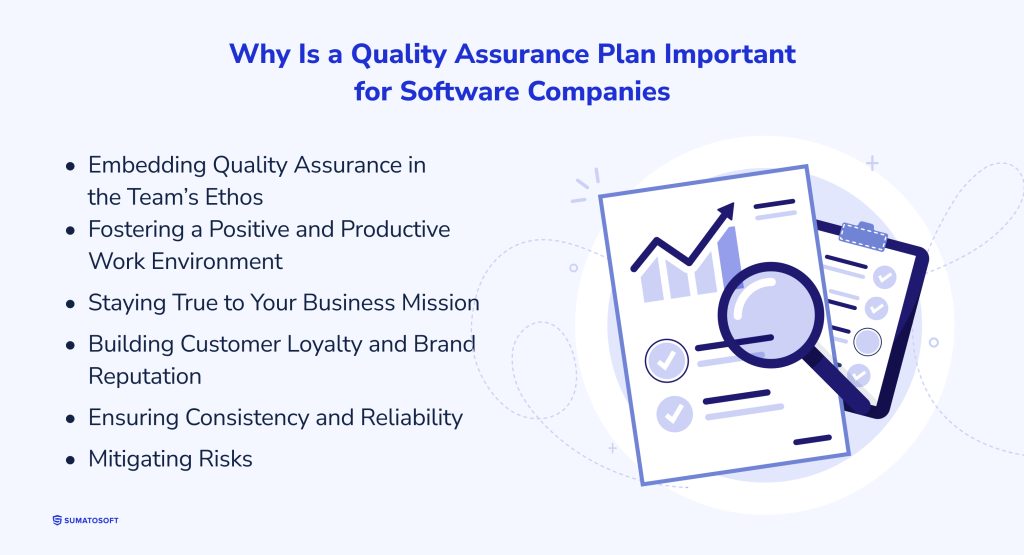
Understanding the importance of quality assurance planning for software companies can really transform the way teams approach their projects and how companies are perceived in the market. This document leads to several tangible and intangible effects.
Embedding Quality Assurance in the Team’s Ethos
Integrating a QA plan into the project workstream means quality assurance becomes more than just a checkbox—it becomes a mindset. When the development team starts to see QA principles as intrinsic to their tasks, their approach shifts from merely ticking off tasks to solving problems and adding real value. This mindset encourages them to take ownership of their work, driving motivation through the pursuit of excellence in the end product.
Fostering a Positive and Productive Work Environment
A QA plan lays out clear goals and pathways to achieve them, clarifying roles and fueling motivation. When team members understand what’s expected of them and the impact of their contributions, they’re more engaged and driven. This clarity and purpose create a more positive work environment where employees are not just working; they’re thriving and contributing to a shared vision of quality.
Staying True to Your Business Mission
In the bustling day-to-day operations, it’s easy for businesses to lose sight of their core objectives. A QA plan serves as a steady guide, ensuring that the software development process aligns with the business’s mission and customer expectations. It helps in maintaining a focus on delivering products that resonate with your customer base while staying true to your company’s foundational values, like teamwork and innovation.
Building Customer Loyalty and Brand Reputation
Delivering consistently high-quality software isn’t just about meeting customer expectations—it’s about exceeding them. A QA plan ensures that software products remain reliable and top-notch, turning first-time users into loyal customers. This loyalty is a testament to the value software provides, enhancing the brand’s reputation and ensuring customer satisfaction.
Ensuring Consistency and Reliability
By adopting a QA plan, it ensures that every software release meets a high standard of quality. It’s about making sure software products are consistently reliable, which not only boosts customer trust but also solidifies a business’s standing in the competitive market.
Mitigating Risks
Without a QA plan, it’s like navigating without a map. The plan is a strategic defense against potential pitfalls, identifying risks before they become problems. This proactive approach saves resources and protects the brand from the damage of overlooked issues, ensuring the longevity and success of your projects.
In summary, a Quality Assurance Plan is not just a procedural document—it’s a strategic tool that embeds quality into the fabric of your team’s work, aligns with your company’s mission, builds enduring customer relationships, and safeguards your projects against unforeseen risks. It’s an indispensable asset for any software company aiming for long-term success and sustainability in today’s fast-paced digital world.
Creating a Project Quality Assurance Plan
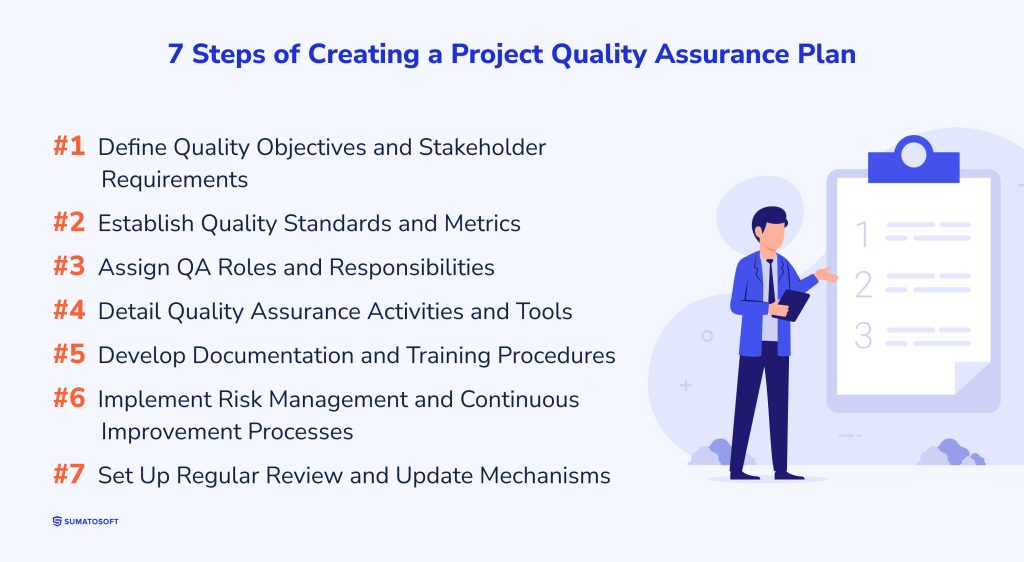
There are multiple activities involved in writing a QA plan. We stick to the 7th step process – this number is enough to describe different aspects of plan creation but not go too deep into the detail.
1. Define Quality Objectives and Stakeholder Requirements
Identify the specific quality goals the software product must achieve and understand the needs and expectations of all stakeholders involved, including customers, regulatory bodies, and internal teams.
2. Establish Quality Standards and Metrics
Determine the industry standards and regulatory requirements the product must comply with. Define clear, measurable metrics to assess the quality of the software throughout its development lifecycle.
3. Assign QA Roles and Responsibilities
Clarify the roles and responsibilities within the team for implementing the QA plan. Ensure that everyone understands their part in the quality assurance process.
4. Detail Quality Assurance Activities and Tools
Outline the specific QA activities, such as testing phases, review cycles, and audits, that will be carried out to ensure quality. Select the tools and technologies that will support these activities.
5. Develop Documentation and Training Procedures
Establish procedures for documenting QA activities and outcomes. Plan for the training and development of team members to enhance their QA skills and knowledge.
6. Implement Risk Management and Continuous Improvement Processes
Identify potential risks to project quality and define strategies to mitigate them. Incorporate mechanisms for continuous monitoring, feedback, and improvement of the QA process.
7. Set Up Regular Review and Update Mechanisms
Create a schedule for regularly reviewing and updating the QA plan to ensure it remains effective and aligned with project goals and changes in technology or market demands. This step is vital in the long run for evolving software solutions.
By following these steps, software companies can create a QA plan that ensures the delivery of high-quality products and fosters a culture of continuous improvement and excellence in software development.
Example Outline of a Quality Assurance Plan
Before you start working on your app or quality assurance planning, it’s important to see a Quality Assurance Plan example. Experienced quality assurance providers such as SumatoSoft offer services to help you with quality assurance both during the software development and when the product is launched. If you still want to create a QA plan by yourself, you will need to understand its key components and why they are important. A typical software Quality Assurance Plan example looks like this:
- General Information: This includes the purpose and scope of the project as well as a general overview of the said project. Any references and points of contact should also be added.
- Schedule: This is the schedule or timeline of the project, including all the tasks and responsibilities as well as who performs them.
- Documentation: This includes any kind of documentation related to the project, such as system documentation, documentation by phase, etc.
- Auditing Guidelines: These are the guidelines used for testing the product as well as reviewing and auditing the project. Usually, the key components are the review process, the audits, the testing process, and the metrics used.
- Correction Guidelines: These are the guidelines for problem reporting and corrective action that happens after the auditing. Any relevant documentation and report metrics are included.
- Tools: These are the tools and controls used throughout the project as well as any additional resources that are needed.
Conclusion
As you can see, using a Quality Assurance Plan can be the most appropriate solution for you to ensure high quality at all times. Project teams should start integrating Quality Assurance Plans to help them stay on track. Use the tips in this article to help you understand how to create a Quality Assurance Plan and start creating them for your projects.
Let’s start
If you have any questions, email us info@sumatosoft.com




